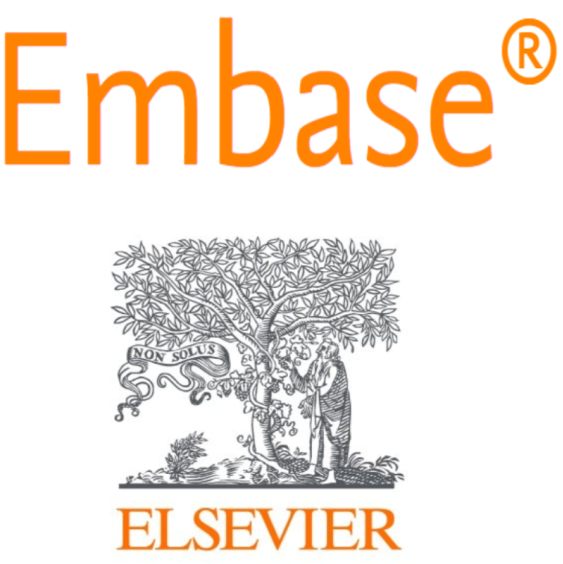Determinants Of Taking Adequate Tetanus Toxoid Vaccination Among Mothers In Their Last Pregnancy In Nigeria
DOI:
https://doi.org/10.56101/rimj.v4i1.139Keywords:
Tetanus toxoid-containing vaccine (TTCV), Maternal and neonatal tetanus, Neonatal mortality, Women, Last pregnancy, NigeriaAbstract
Background: Nigeria records considerable morbidity and mortality from tetanus, predominantly in newborns and women of reproductive age group. This is largely due to poor tetanus toxoid-containing vaccine (TTCV) uptake. This study investigated the factors influencing the uptake of adequate Tetanus toxoid vaccination among women in their last pregnancy in Nigeria.
Methods: This descriptive cross-sectional study used data sets extracted from the Nigeria Multiple Indicator Cluster Survey. It includes data collected from 4,855 women, aged 15-49 years across the six geopolitical zones in Nigeria. Data analysis, chi-square test and logistic regression analysis were then performed.
Results: Out of the 4,855 women recruited, slightly half of the respondents (51.7%) were between the ages of 25 and 34. All respondents had tetanus injections, the majority of which (86.7%) were adequate. Some factors identified to influence TTCV uptake positively were younger age group (p<0.001, OR=1.377), tertiary education (p<0.001, OR=2.093), wealth (p<0.001, OR=2.217), owning an immunisation card (p<0.001, OR=0.69), exposure to radio and television (p<0.001, OR=1.749), residence in southern Nigeria (p=0.020, OR=1.571), prenatal care (p=0.019, OR=0.585) and delivery in health care facility (p<0.019, OR=0.448).
Conclusion: This study found that the TTCV uptake in Nigeria among mothers in their last pregnancy was in keeping with the standard recommended by WHO for any country aspiring to eliminate maternal and neonatal tetanus. However, the lowest uptake was observed in the Northern region. We recommend that national policies on maternal and child care should be reviewed to improve TTCV uptake and aid the elimination of maternal and neonatal tetanus across all geopolitical zones in Nigeria.
References
World Health Organization. Tetanus vaccines: WHO position paper – february 2017. Available at: https://www.who.int/publications/i/item/WHO-WER9206. Accessed Jan 17, 2024.
Kanu FA, Yusuf N, Kassogue M, Ahmed B, Tohme RA. Progress toward achieving and sustaining maternal and neonatal tetanus elimination — worldwide, 2000–2020. MMWR Morbidity and Mortality Weekly Report. 2022;71(11):406–11.
Kyu HH, Mumford JE, Stanaway JD, Barber RM, Hancock JR, Vos T, et al. Mortality from tetanus between 1990 and 2015: Findings from the global burden of disease study 2015. BMC Public Health. 2017;17(1).
Uleanya ND. Achieving neonatal tetanus elimination in Nigeria: Undisclosed challenges and prospects. Tropical Doctor. 2017;48(1):25–30.
Orimadegun AE, Adepoju AA, Akinyinka OO. Prevalence and socio-demographic factors associated with non-protective immunity against tetanus among high school adolescents girls in Nigeria. Italian Journal of Pediatrics. 2014;40(1):29.
Morhason-Bello I, Kareem YO, Illah O, Akinyemi JO, Abdus-salam R, Lawal O, et al. Factors associated with the uptake of antenatal tetanus Toxoids containing vaccine by first-time mothers in Nigeria: Findings from the 2018 Nigerian demographic health survey. Journal of Pregnancy. 2022;2022:1–12.
National Population Commission and ICF International. Nigeria demographic and health survey 2013. Available at: https://www.dhsprogram.com/pubs/pdf/FR293/FR293.pdf. Accessed Jan 17, 2024.
Sule SS, Nkem-Uchendu C, Onajole AT, Ogunowo BE. Awareness, Perception and Coverage of Tetanus Immunisation in Women of Child Bearing Age in an Urban District of Lagos, Nigeria. Niger Postgr Med J. 2014;21(2):107–114.
Thwaites CL, Beeching NJ, Newton CR. Maternal and neonatal tetanus. The Lancet. 2015;385(9965):362–70.
Njuguna HN, Yusuf N, Raza AA, Ahmed B, Tohme RA. Progress toward maternal and neonatal tetanus elimination — worldwide, 2000–2018. MMWR Morbidity and Mortality Weekly Report. 2020;69(17):515–20.
Burgess C, Gasse F, Steinglass R, Yakubu A, Raza AA, Johansen K. Eliminating maternal and neonatal tetanus and closing the immunity gap. The Lancet. 2017;389(10077):1380–1.
World Health Organization. Protecting all against tetanus. Available at: https://www.who.int/publications/i/item/protecting-all-against-tetanus. Accessed Jan 17, 2024.
World Health Organization. Progress towards global MNT Elimination. Available at: https://www.who.int/initiatives/maternal-and-neonatal-tetanus-elimination-(mnte)/progress-towards-global-mnt-elimination ; Accessed Jan 17 2024.
World Health Organization. Weekly epidemiological record. Wkly. Epidemiol. Rec.. 2006;81(47):445-52.
Donken R, van der Maas N, Swaan C, Wiersma T, te Wierik M, Hahné S, et al. The use of tetanus post-exposure prophylaxis guidelines by General Practitioners and emergency departments in the Netherlands: A cross-sectional questionnaire study. BMC Family Practice. 2014;15(1):112.
Muhammad-Idris Z, Shehu A, Isa F. Assessment of tetanus toxoid coverage among women of reproductive age in Kwarbai, Zaria. Archives of Medicine and Surgery. 2017;2(2):48.
Dağdeviren G, Örgül G, Yücel A, Şahin D. Tetanus vaccine during pregnancy: Data of a tertiary hospital in Turkey. Turkish Journal of Medical Sciences. 2020;50(8):1903–8.
Liyew AM, Ayalew HG. Individual and community-level determinants of poor tetanus toxoid immunization among pregnant women in Ethiopia using data from 2016 Ethiopian demographic and Health Survey; multilevel analysis. Archives of Public Health. 2021;79(1):92.
Teshale AB, Tesema GA. Determinants of births protected against neonatal tetanus in Ethiopia: A multilevel analysis using EDHS 2016 data. PLoS One. 2020;15(12):e0243071.
Masuno K, Xaysomphoo D, Phengsavanh A, Douangmala S, Kuroiwa C. Scaling up interventions to eliminate neonatal tetanus: Factors associated with the coverage of tetanus toxoid and clean deliveries among women in Vientiane, Lao PDR. Vaccine. 2009;27(32):4284–8.
Hassan AM, Shoman AE, Abo-Elezz NF, Amer MM. Tetanus vaccination status and its associated factors among women attending a primary healthcare center in Cairo Governorate, Egypt. Journal of the Egyptian Public Health Association. 2016;91(3):127–34.
Gessesse DN, Yismaw AE, Yismaw YE, Workneh TW. Coverage and determinants of protective dose tetanus toxoid vaccine among postnatal women delivered at University of Gondar Comprehensive Specialized Hospital, Northwest Ethiopia, 2019. Clinical Epidemiology and Global Health. 2021;12:100814.
Nigussie J, Girma B, Molla A, Mareg M. Tetanus toxoid vaccination coverage and associated factors among childbearing women in Ethiopia: A systematic review and meta-analysis. BioMed Research International. 2021;2021:1–10.
Oruamabo RS. Neonatal tetanus in Nigeria: Does it still pose a major threat to neonatal survival? Archives of Disease in Childhood. 2007;92(1):9–10.
Gabriel-Job N, E. Yaguo Ide L. Tetanus toxoid status and determinants of uptake among women in Etche local government area, Rivers State, Nigeria: A community based study. Asian Journal of Medicine and Health. 2020;17(4):1–7.
National Population Commission and ICF International. Nigeria demographic and health survey, 2018. Available at: https://www.dhsprogram.com/publications/publication-fr359-dhs-final-reports.cfm?cssearch=557120_1. Accessed Jan 17, 2024.
Yaya S, Kota K, Buh A, Bishwajit G. Prevalence and predictors of taking tetanus toxoid vaccine in pregnancy: A cross-sectional study of 8,722 women in Sierra Leone. BMC Public Health. 2020;20(1):855.
Amin MB, Roy N, Meem AE, Hossain E, Aktarujjaman M. Trends and determinants of taking tetanus toxoid vaccine among women during last pregnancy in Bangladesh: Country representative survey from 2006 to 2019. PLOS ONE. 2022;17(10):e0276417.
Gidado S, Nguku P, Biya O, Waziri NE, Mohammed A, Nsubuga P, et al. Determinants of routine immunization coverage in Bungudu, Zamfara State, Northern Nigeria, May 2010. Pan African Medical Journal. 2014;18(1):9.
Gebremedhin TS, Welay FT, Mengesha MB, Assefa NE, Werid WM. Tetanus toxoid vaccination uptake and associated factors among mothers who gave birth in the last 12 months in Errer District, Somali Regional State, Eastern Ethiopia. BioMed Research International. 2020;2020:1–8.
Haile ZT, Chertok IR, Teweldeberhan AK. Determinants of utilization of sufficient tetanus toxoid immunization during pregnancy: Evidence from the Kenya Demographic and Health Survey, 2008–2009. Journal of Community Health. 2012;38(3):492–9.
Published
How to Cite
Issue
Section
License
Copyright (c) 2024 Isaac Olufadewa, Miracle Adesina, Happiness Akinniranye, Ruth Oladele, Toluwase Olufadewa, Elizabeth Obigwe

This work is licensed under a Creative Commons Attribution 4.0 International License.









